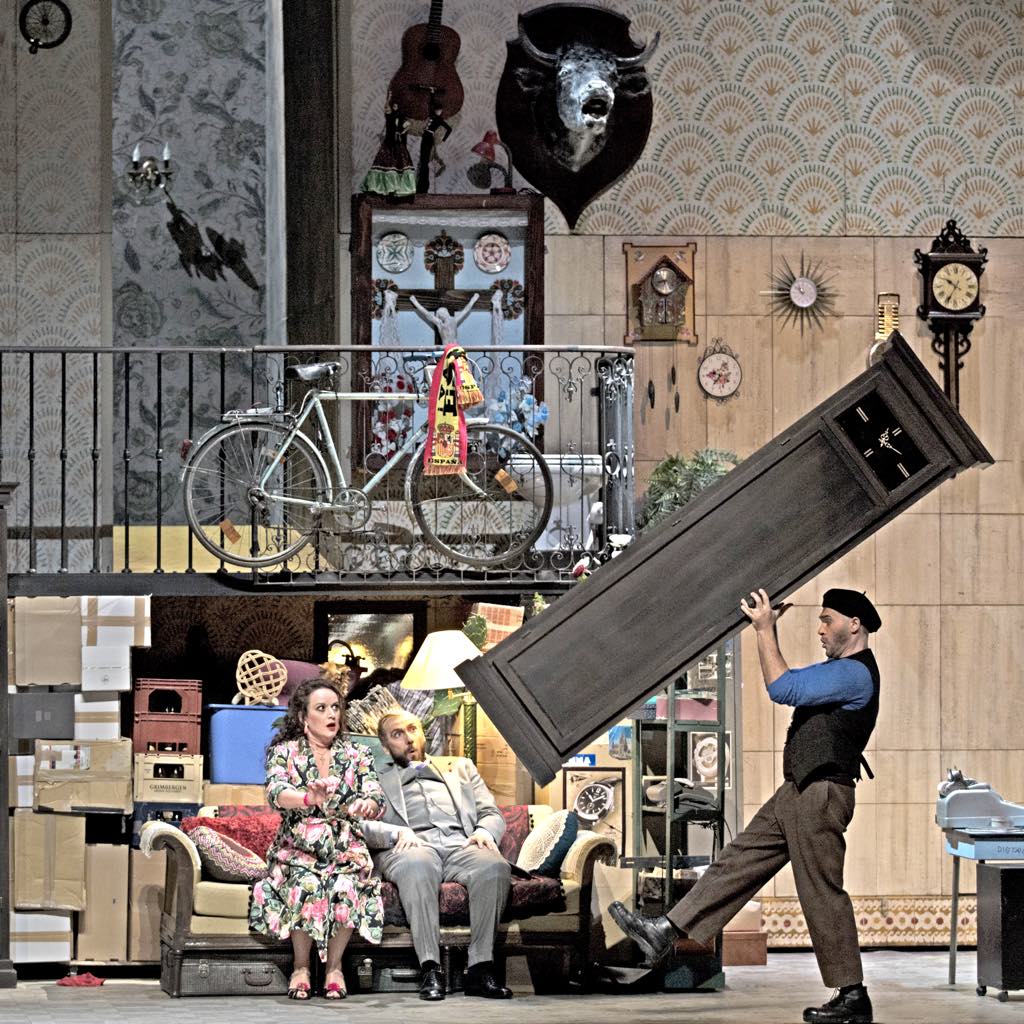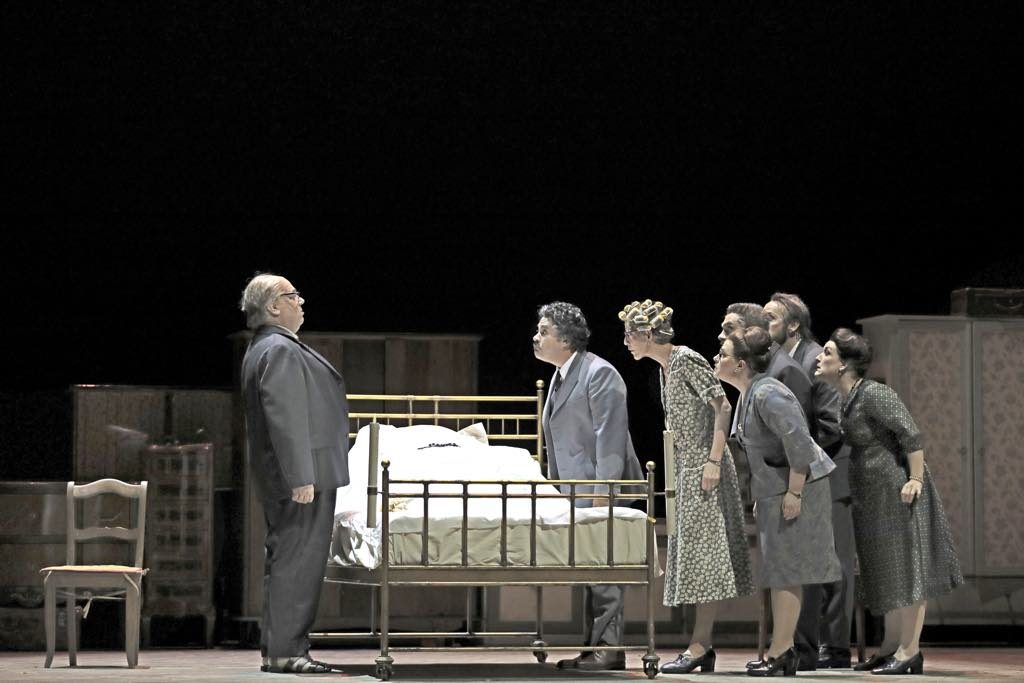
In the opera world, it has now become the rule rather than the exception to pair Maurice Ravel’s 1911 one-act opera L’Heure Espagnole with Giacomo Puccini’s 1918 single-act Gianni Schicchi. It is easy to see why: although each piece has a very different musical idiom, both are riotous comedies that send up the pretensions and desires of the bourgeoisie. The Bastille Opera’s revival of legendary director Laurent Pelly’s 2004 Garnier production provides a suitably lighthearted summer alternative to the much heavier fare of the just-ending run of Wagner’s Parsifal (which was beset by technical difficulties resulting in the cancellation of the first three performances) and the forthcoming production of Mussorgsky’s monumental Boris Godunov.
L’Heure Espagnole, set in 18th-century Spanish clockmaker Torquemada’s shop (updated here to what seems to be mid- to late 20th century), concerns the attempts of Torquemada’s wife Concepcion (sung and acted here with brio by French mezzo-soprano Clémentine Margaine) to juggle various male suitors while her husband is out fixing the municipal clocks. The cluttered set, filled with clocks, boxes, bicycles and even a stuffed bull, adds to the sense of chaos as her lovers hide (and are even transported) in grandfather clocks.
All the male roles are energetically performed, with Philippe Talbet as the cuckolded husband, Stanislas de Barbeyrac in the role of the preening poet Gonzalve, Nicolas Courjal as the rich banker Don Inigo Gomez, and Jean-Luc Ballestra as the muscular mule driver who manages to carry grandfather clocks (with and without hidden lovers inside them) between rooms with consummate ease.
The young conductor Maxime Pascal took great care to shape a beautiful musical line with the orchestra of the Opéra National de Paris, but sometimes this elegance seemed to be at odds with the vitality and wit onstage.

Luckily, Pascal got into his stride in the second half, with a much more driven performance of the Puccini. The story of Gianni Schicchi is taken from a brief episode in Dante’s 14th-century Inferno (the time period is updated here as well).
When assorted family members gather around the deathbed of the wealthy Buoso Donati, they discover to their horror that he has left all his worldly possessions to a monastery. Before any doctors or lawyers arrive, they call upon the services of the eponymous trickster Schicchi to pose as the dying Donati so that he can dictate a new will favorable to all the family.
The disorder of the Ravel piece’s set is cleverly replicated in the Puccini opera, with an array of wardrobes and chests of drawers in the dead man’s bedroom transforming magnificently into the cluttered skyline of Florence.
The large ensemble of soloists is excellent, with Artur Rucinski in scintillating form as Schicchi and soprano Elsa Dreisig, in the role of his daughter Lauretta, giving a beautiful rendition of the most famous aria from the opera, “O Mio Babbino Caro.”
If you prefer your opera to provide light relief from the travails of the world, this delightful double bill is definitely the production to see in Paris in May and June.
Favorite